Alongside unique customs, languages, and crafts, new places mean new foods! In Southeast Asia, the variety of strange-looking and surprise-tasting fruits and vegetables surely exceeds this article space. Let’s just grab a few for starters and discover 7 unique fruits and vegetables from Southeast Asia
Rambutan
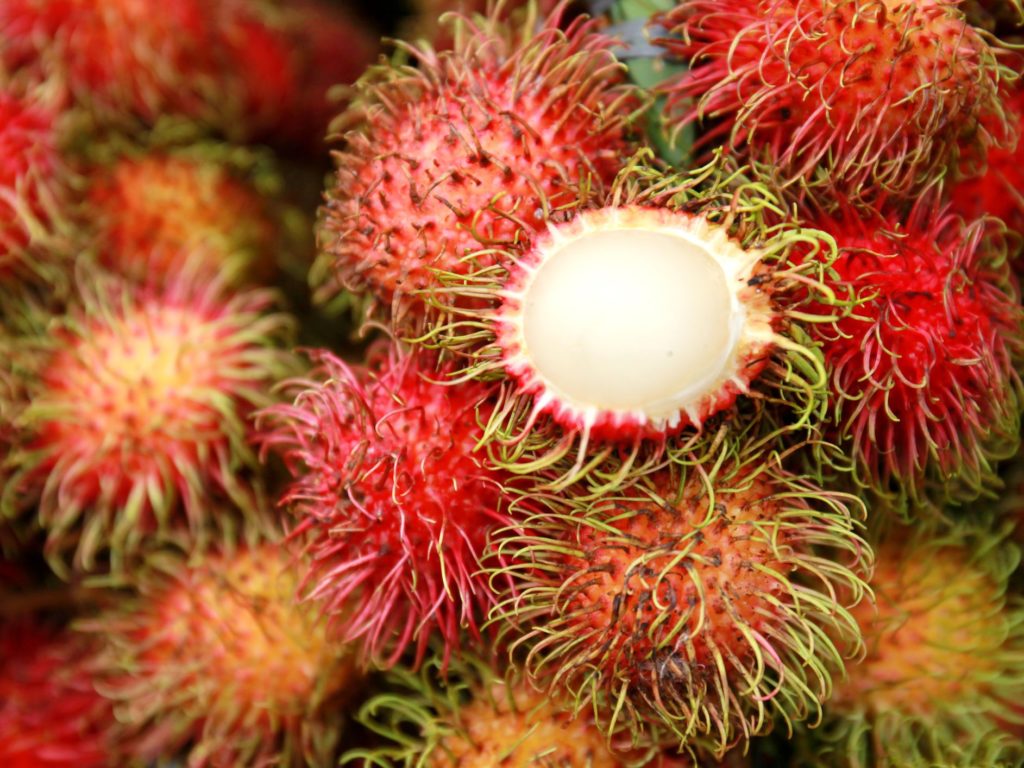
Rambutan looks like something from another planet that one would probably avoid touching, let alone consuming. A bunch of rambutans is made up of small red balls covered in light green spikes, but these are very soft spikes upon closer inspection. Open the soft covering to reveal a lichee-type of pale fruit inside. The taste is comparable to a grape or lichee. Mind the seed in the center! Best to take bites around it.
Lotus Seeds
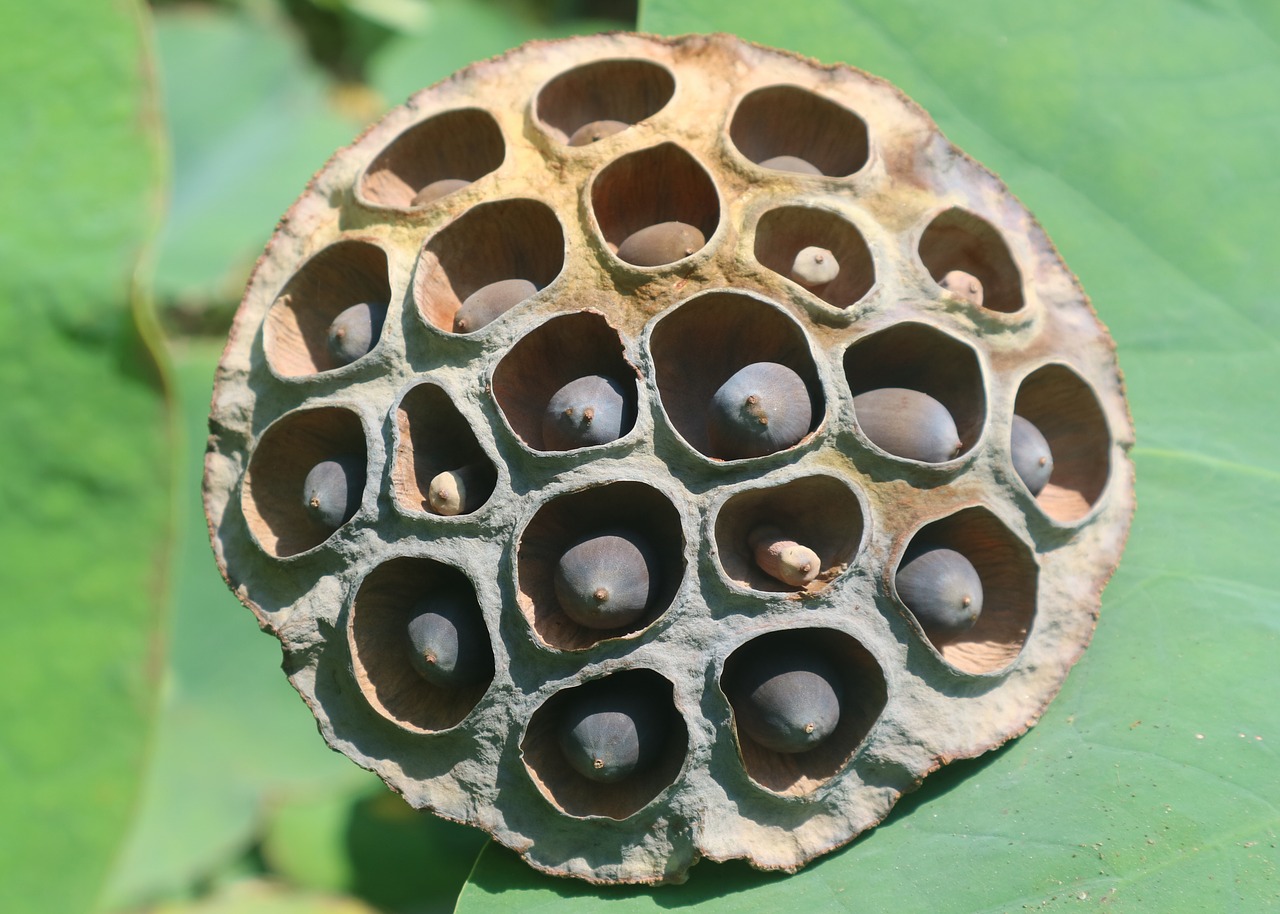
Lotus seeds are comparable to small wet peanuts. After the flowers have bloomed, a stem of seeds remain. People collect and sell them in petal-less bouquets, each base containing a couple of dozen seeds. To eat this little wonder, there a few steps to follow. Simply tear open part of the green base and pull out a small green seed. Bite or use a fingernail nail to open the green outer layer of the seed and from here it can be eaten. The middle of the seed has a tiny plant with a slightly bitter taste. Some people prefer to go one step further, biting the little seed in half and removing the tiny plant as well. No matter, one will surely reach the expert level, moving through multiple flowers in no time.
Banana Flower
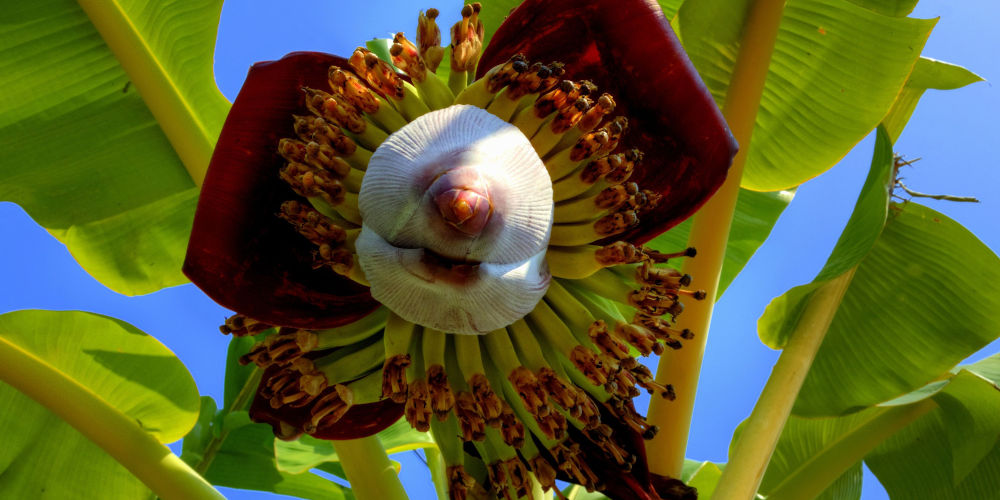
Yes, banana trees have flowers — huge, purple and tear-shaped. These multi-layered blossoms grow at the end of the banana bunches. To find the tasty center, peel past the red leaves, through the clusters of florets, to the white “heart” inside. The heart will oxidize quickly, similar to artichokes and apples, so it can be put into lemon water immediately to slow the process. The heart is the main part used for cooking and is used in stir-fries, soups or raw in salads.
Dragonfruit
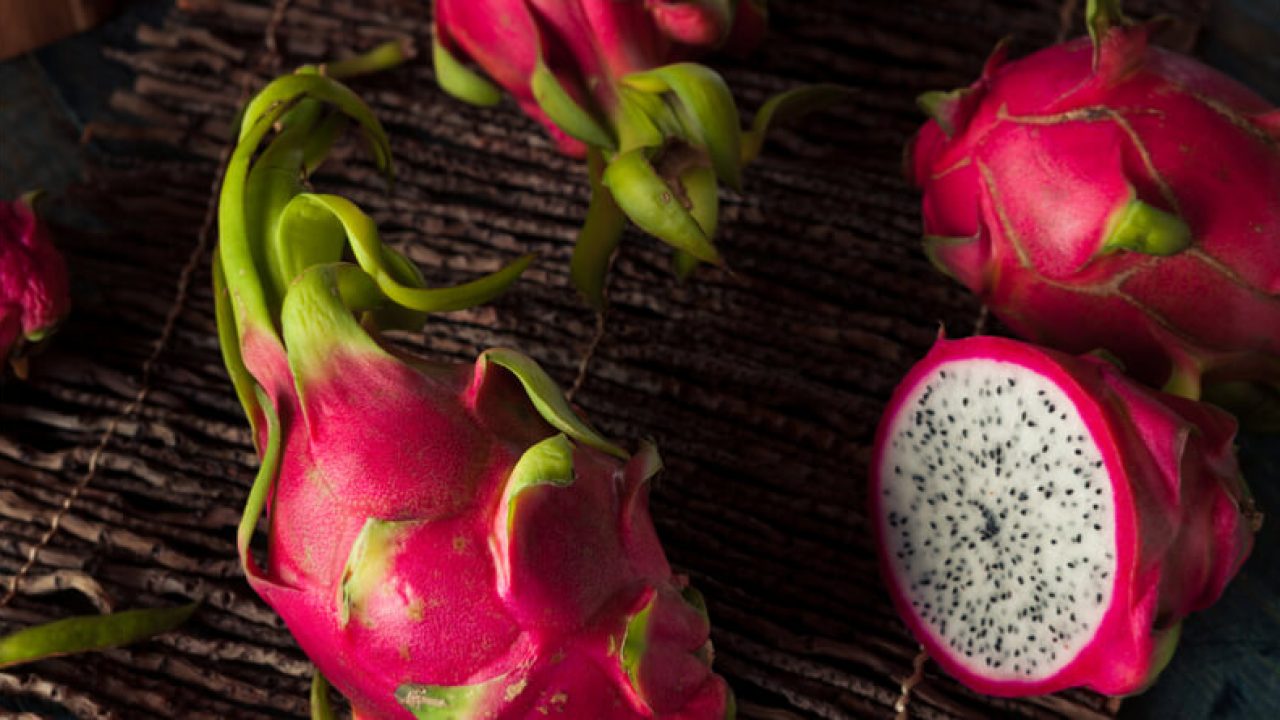
The shape and interior of this stunning fruit do hint at its magical namesake. The outer pink cover is spotted with quite a few thick, spiny shaped green curls and the inside is white with small black seeds speckled throughout. The interior flesh is accessed easily by cutting and peeling the exterior. The taste is very mild and some have said, rather anti-climactic for all its show. An alternate type of dragonfruit boasts a stunning pink color inside, with a similar though slightly sweeter taste.
Bamboo Shoots
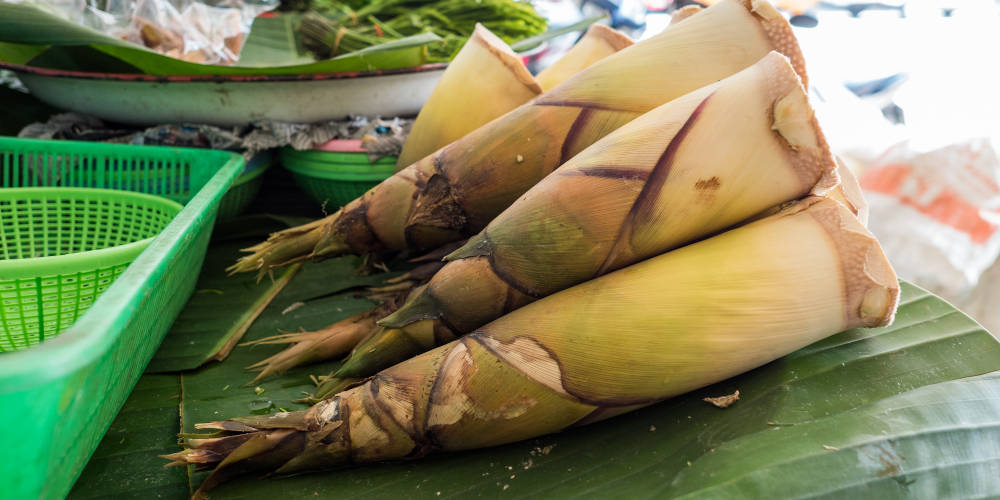
In the west, bamboo is seen as a panda’s snack or maybe the small Asian-style plants that live easily in decorative pots at home. In Southeast Asia, it’s incredibly versatile, providing excellent construction material as well as healthy meals. At the base of a cluster of bamboo, the new shoots are cut and peeled, then sliced thinly for soups, braised, or stir-fried. A refreshing and mild flavor, this vegetable is rich in protein, vitamins, and fiber.
Mangosteen
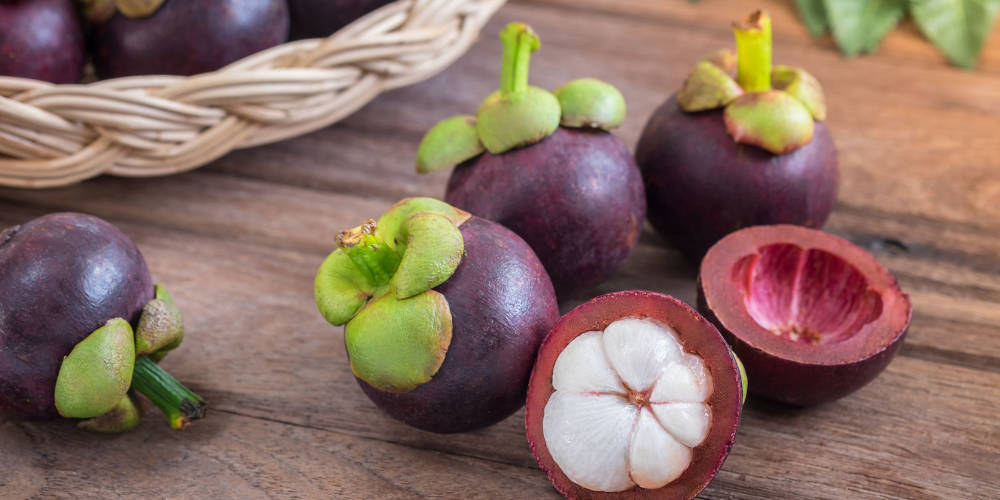
Also known as the “Queen of fruits”, the small mangosteen is another fruit that’s full of surprises. The unassuming hard shell is a dark purple with a solid clover-like leaf at the stem. It takes a bit of practice to apply pressure to the outside, using both thumbs, to convince the shell to give way, past a deep purple wet fiber to the shocking white center. Bright white and sectioned like a mandarin, the mangosteen tastes deliciously sweet and worth the effort.
Durian
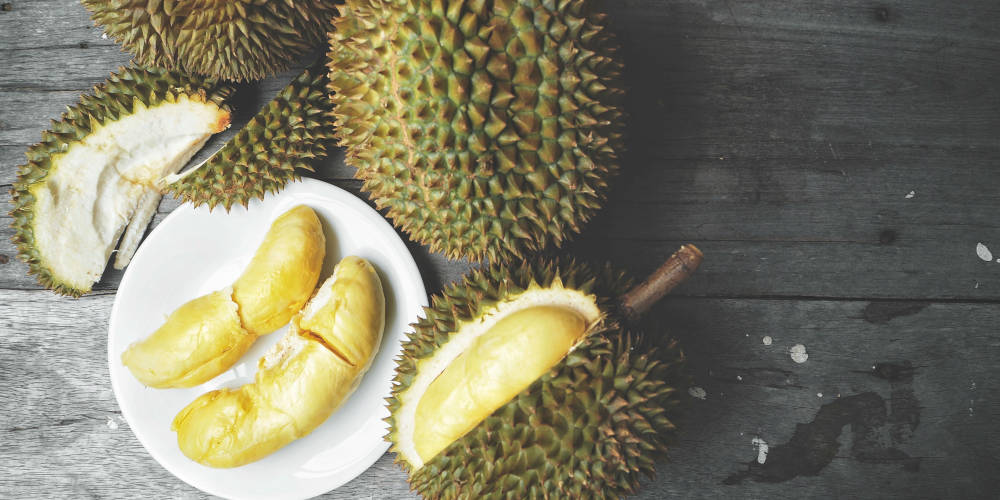
What better fruit to follow the Queen of fruits than the King of Fruits, Durian. This controversial fruit has caused an international stir as its reputation for stink, compared even to rotting garbage, has raised curiosity, fear and suspicion. The imposing green fruit, covered in pointy hard spikes is banned from hotels and buses as the smell permeates the air quickly and completely. However, many fans love durian, and the smell causes salivation and craving for the sweet custard flesh. Each careful cut reveals a section to remove, often 4-5 in total.
The list goes on and the author, a long-time resident of Cambodia, is now craving her favorite snacks. If ever in Southeast Asia, be brave, try some selections from a fresh array of fruits and vegetables. One never knows when a pleasant surprise will become a new favorite. Off, to buy lotus seeds!
-------
Do you like Asian cuisine?Download our Free Recipe Book Curries to Cocktails: 12 Asia-inspired food & drink recipes compiled by our team.
|


 By Christie Posted 24th Apr 2020
By Christie Posted 24th Apr 2020







